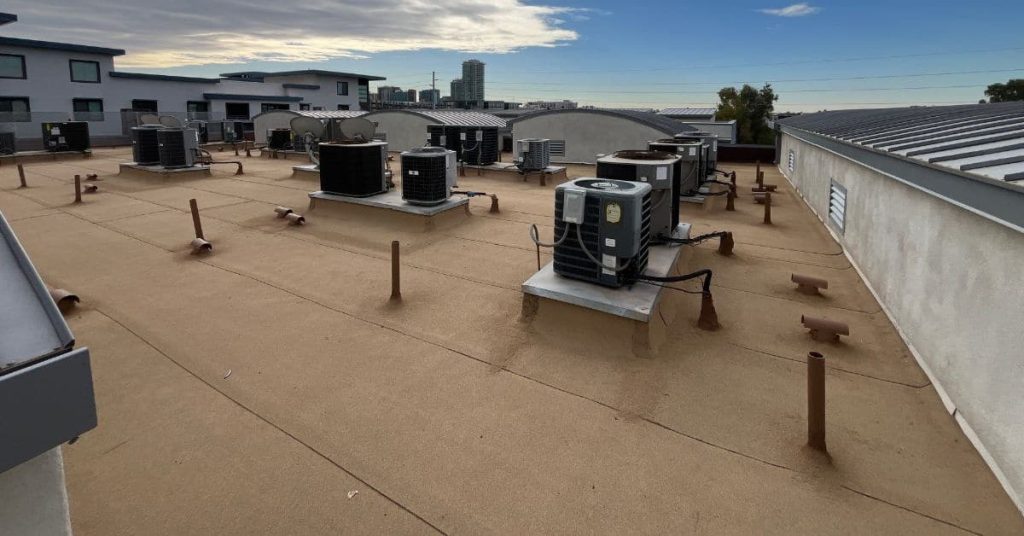
Maintaining the roof of a multi-family building is incredibly important. It can save or cost an organization or person tens of thousands of dollars.
In most cases, this responsibility falls on the shoulders of a property management company, the manager of the building, or the property’s owner. In some cases, they aren’t aware of the responsibility or how much of a difference they can make by caring for the roofing system.
A well-maintained roof not only provides safety and comfort for residents and protects the lifespan of the building but also helps the building’s roof last as long as it should, and it can save tens of thousands of dollars over the life of the building.
However, managing large-scale roofing systems comes with unique challenges, from identifying early signs of damage to coordinating repairs across multiple units.
This resource explores essential tips for maintaining multi-family roofing systems, including regular inspections, maintenance, hiring professional multi-family and apartment building roofing contractors, and addressing common issues before they escalate.
Table of Contents
Regular Multi-Family Roofing Inspections
Regular inspections are one of the most effective ways to maintain a multi-family roofing system. These inspections are critical for early problem detection, helping identify damaged foam, leaks, broken tiles, or poor drainage before they become worse and costly.
For multi-family properties, it’s recommended to schedule inspections at least twice a year, ideally in the spring and fall, to assess the roof’s condition after harsh weather conditions.
During these inspections, focus on key areas such as:
- Drainage systems: Ensure gutters and downspouts are clear of debris to prevent water pooling.
- Flashing: Check for cracks or gaps around chimneys, vents, and skylights.
- Mortar Packets: Identify worn-down mortar packets to avoid damage.
- Shingles or roofing materials: Look for signs of wear, such as curling, cracking, or missing pieces.
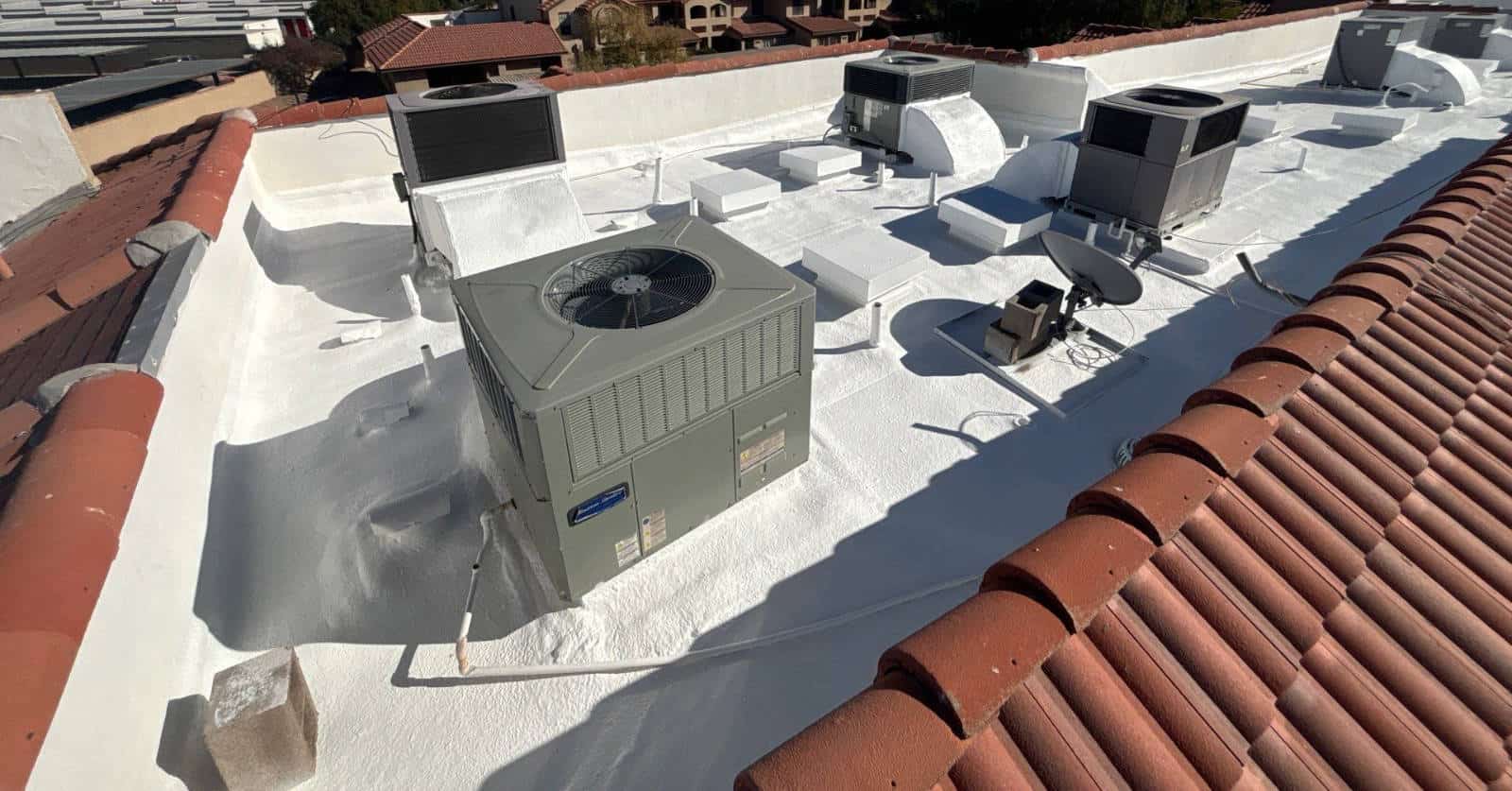
Hiring Professional Apartment Building Roofing Contractors
When it comes to maintaining or repairing multi-family roofing systems, working with experienced apartment building roofing contractors is essential. These professionals have the expertise and equipment to handle large-scale projects efficiently and safely. When choosing a contractor, consider the following:
- Licensing and insurance: Ensure the contractor is licensed and carries adequate insurance to protect your property and their workers.
- References and reviews: Ask for references from previous clients and read online reviews to gauge their reputation.
- Experience with multi-family properties: Look for contractors who specialize in multi-family roofing systems, as they understand these properties’ unique challenges and have experienced team members.
Before hiring, ask questions like:
- What is your experience with multi-family roofing inspections and repairs?
- Do you offer warranties or guarantees on your work?
- Can you provide a detailed estimate and timeline for the project?
- Do you provide maintenance? If so, what do you look for during your visit?
Common Issues in Multi-Family Roofing Systems
Multi-family roofing systems are prone to specific issues that require prompt attention. Some of the most common problems include:
- Leaks: Often caused by damaged flashing or worn shingles, leaks can lead to interior water damage if not addressed quickly.
- Ponding water: Poor drainage can result in water pooling on flat roofs, leading to structural damage over time.
- Structural damage: Heavy snow, high winds, or aging materials can compromise the roof’s integrity.
Environmental factors like extreme weather and UV exposure can accelerate roof deterioration. Regular multi-family roofing inspections can help identify these issues early, saving you time and money in the long run.
Multi-Family Roof Repair Services
Knowing when to seek professional multi-family roof repair services is crucial. If you notice signs of damage, such as water stains on ceilings, sagging roof sections, or excessive granule loss from shingles, it’s time to call in the experts. Common types of repairs include:
- Patching: Fixing small areas of damage to prevent further deterioration.
- Sealing: Applying sealant to cracks or gaps to prevent leaks.
- Replacing materials: Installing new shingles, membranes, or other roofing components to restore the roof’s functionality.
When budgeting for repairs, consider both the immediate costs and the long-term benefits of addressing issues promptly. Delaying repairs can lead to more extensive damage and higher expenses down the line.
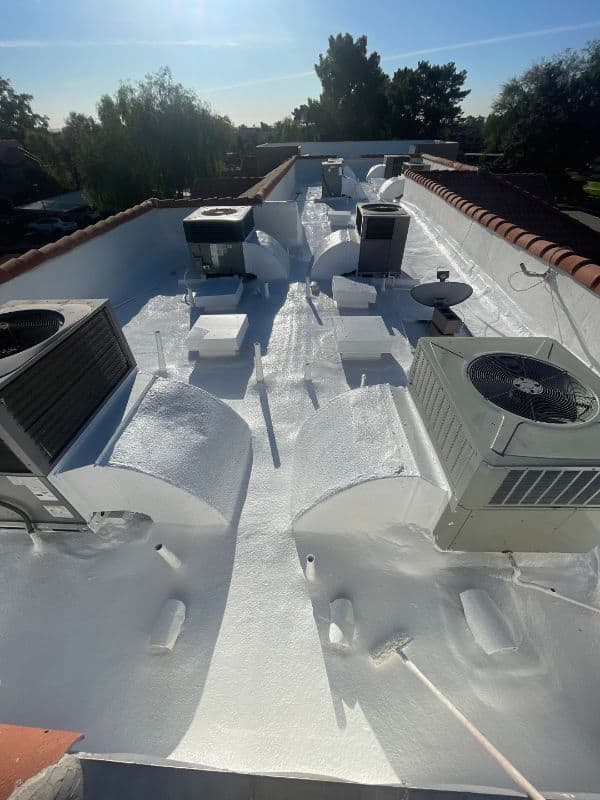
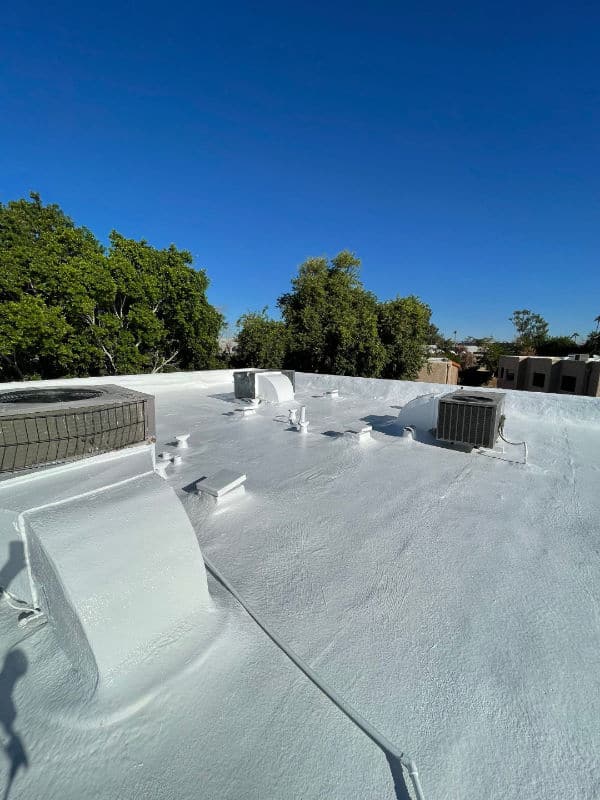
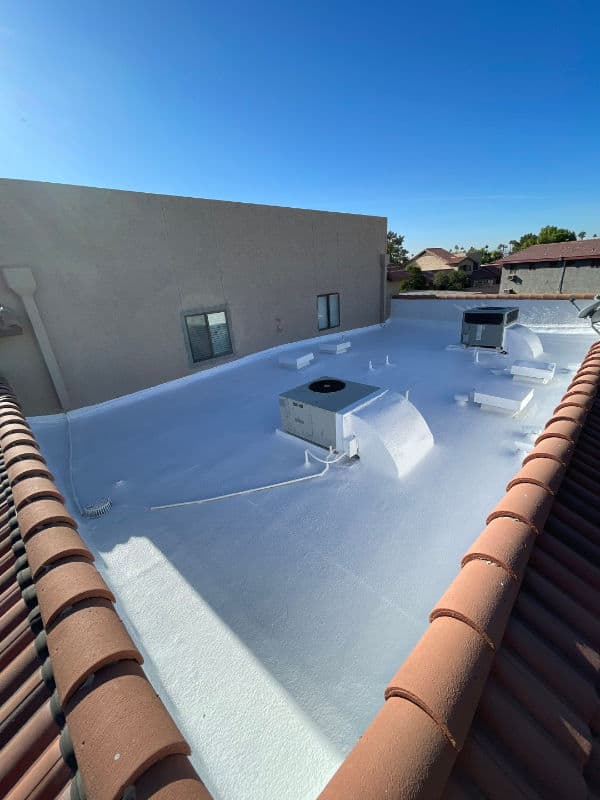
Preventative Maintenance Tips
Preventative maintenance is key to extending the life of your multi-family roofing system. Here are some practical tips:
- Clean gutters and downspouts: Regularly remove debris to ensure proper water drainage and prevent water damage.
- Trim overhanging trees: Keep branches away from the roof to avoid debris buildup and potential damage from falling limbs.
- Schedule routine maintenance: Partner with apartment building roofing contractors to perform regular inspections and maintenance tasks.
Long-Term Roofing Solutions
For property owners looking to invest in long-term solutions, upgrading to durable roofing materials can provide significant benefits. Options like metal roofing, TPO membranes, or modified bitumen are known for their longevity and resistance to weather-related damage. Additionally, ensure that your contractor offers warranties or guarantees on their work, providing peace of mind and protection for your investment.
Planning for future roofing needs is also essential. Establish a schedule for regular multi-family roofing inspections and set aside a budget for ongoing maintenance and repairs. By staying proactive, you can avoid unexpected expenses and ensure the roof remains in excellent condition for years to come.
Caring for Your Multi-Family Roofing System Pays
Maintaining a multi-family roofing system requires a proactive approach, from regular inspections to scheduling and overseeing timely repairs and complete roof replacements. By partnering with experienced apartment building roofing contractors and addressing issues early, you can protect your property and ensure the safety and comfort of your residents. Remember, investing in preventative maintenance and long-term solutions saves money and extends the life of your roof. Prioritize multi-family roofing inspections and repairs to keep your property in top condition.
Frequently Asked Questions About Multi-Family Roofing Systems
1. How often should I schedule multi-family roofing inspections?
It’s recommended to schedule inspections at least twice a year, typically in the spring and fall, to assess the roof’s condition after the harsh weather passes. If you live near a golf course, you should consider quarterly inspections. If your apartments or condominiums experience an extreme storm, it’s a good idea to get a roof inspection after the storm.
2. What should I look for in apartment building roofing contractors?
Look for contractors with experience in multi-family properties, proper licensing and insurance, and positive reviews or references from previous clients.
3. What are the most common issues in multi-family roofing systems?
Common issues include leaks, ponding water, and structural damage caused by weather or aging materials.
4. How can I prevent roof damage in multi-family properties?
Regularly clean gutters, trim overhanging trees and schedule routine maintenance with professional contractors to prevent damage.
5. What are the benefits of upgrading to durable roofing materials?
Durable materials like metal or TPO membranes offer longer lifespans and better resistance to weather-related damage, reducing the need for frequent repairs.
0 Comments